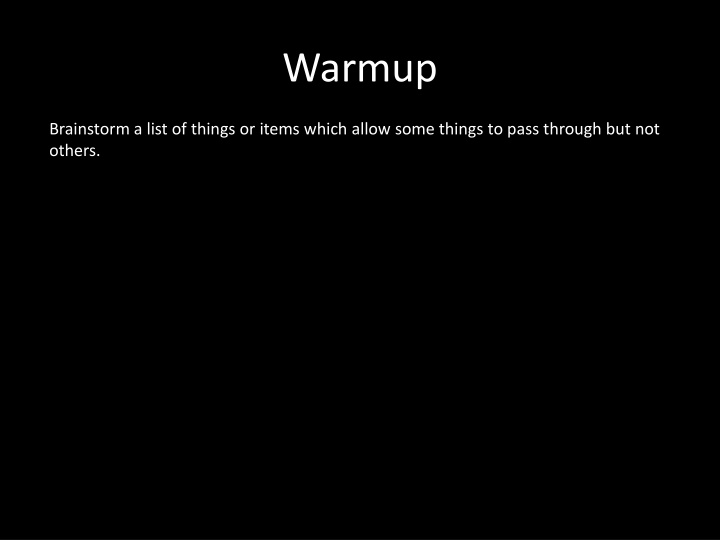
Cellular Transport: Passive and Active Mechanisms
Dive into the fascinating world of cell transport with a focus on passive and active mechanisms. Explore concepts like diffusion, osmosis, and exocytosis as you unravel how cells move materials across their membranes.
Uploaded on | 0 Views
Download Presentation

Please find below an Image/Link to download the presentation.
The content on the website is provided AS IS for your information and personal use only. It may not be sold, licensed, or shared on other websites without obtaining consent from the author. If you encounter any issues during the download, it is possible that the publisher has removed the file from their server.
You are allowed to download the files provided on this website for personal or commercial use, subject to the condition that they are used lawfully. All files are the property of their respective owners.
The content on the website is provided AS IS for your information and personal use only. It may not be sold, licensed, or shared on other websites without obtaining consent from the author.
E N D
Presentation Transcript
Warmup Brainstorm a list of things or items which allow some things to pass through but not others.
Warmup Now organize your list into categories by identifying features that some of the items have in common.
Cell Membranes and Transport SEPTEMBER 14, 2010
Note-taking Preview (Hierarchy of Organization) Cell Transport Passive Active Diffusion Osmosis Exocytosis Endocytosis Phagocytosis Learning Goal: By the end of this lesson, I ll be able to describe features of five types of cell transport. By the end of this week will be able to remember and spell these as vocabulary words.
Passive vs. Active Review: Cells are basic units of form and function for all living things. They are self-contained by a flexible semi-permeable membrane. New: There are two categories of ways for materials to move through the membrane. Passive transport moves things around automatically, all the time, without using energy. Active transport takes energy to either fold the membrane around the material and break off into a small container, or push the material through a special pore in the membrane.
Diffusion (Passive) As a result of random motion, things tend to spread from areas of high concentration to areas of low concentration. When a membrane with special pores is involved, it s called facilitated diffusion because the membrane helps the process along. Ex 1: Chickens escape from a coop and go everywhere. Ex 2: A fart slowly makes its way from the perpetrator to victims in the surrounding area. Ex 3: A drop of dye slowly colors a jar of water.
Osmosis (Passive) Water moves across a membrane from a fresh area towards a salty area. A difference in saltiness literally produces pressure across the membrane. Ex 1: A carrot placed in bowl of very salty water loses water through the cell membranes, become smaller and squishy. A carrot placed in a bowl of fresh water gains water through the cell membrane and becomes full and crisp. Ex 2: REVERSE Osmosis is the process of using powerful pumps to push saltwater through a membrane which is impermeable to salt, creating fresh water. This is one method for de-salinization for coastal drinking water.
Exocytosis (Active) A container made of the same materials as the membrane merges with the membrane, and expels from the cell whatever was inside in the process.
Endocytosis and Phagocytosis (Active) These are the opposite of exocytosis in that the membrane folds around something and then breaks off into the cell. How to remember which direction endo and exo are: Endo sounds like enter Exo sounds like exit
Phagocytosis http://www.youtube.com/watch?v=fpOxgAU5fFQ http://www.youtube.com/watch?v=W6rnhiMxtKU&feature=related Phagocytosis is different than endocytosis in that endocytosis is normal but phagocytosis is carnivorous ! Ex 1: A regular cell engulfs some protein, but a white blood cell engulfs a bacteria cell. Ex 2: A little micro-organism eats some spoiling milk, and then a bigger micro- organism eats the little one.
Practice Write the names of the transport types in the correct categories. Passive Transport Active Transport
Practice Create a mind map showing how today s ideas are related. A list of vocabulary is: Permeable (Prefixes: Semi, Im) Membrane Active Transport Passive Transport Diffusion Osmosis Exocytosis Endocytosis Phagocytosis Then create flashcards for these words.
